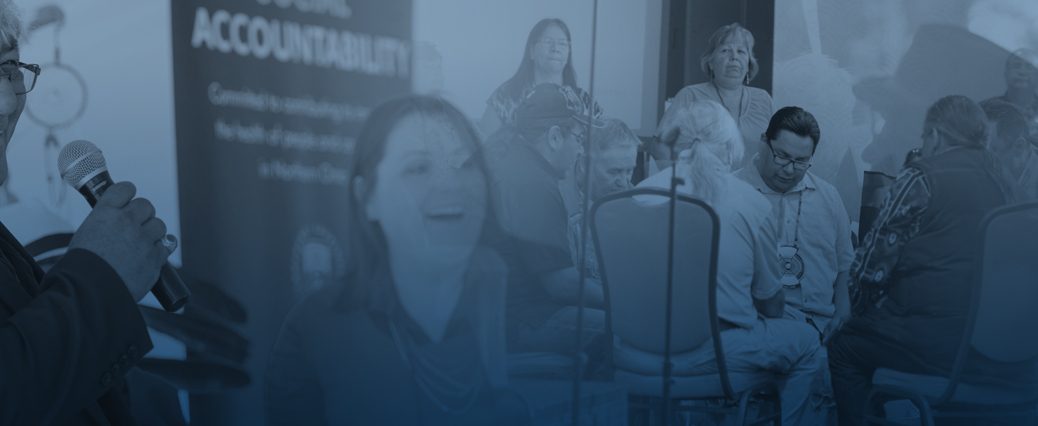Advancements in Indigenous Health Research
Evidence-based practice is integral to the professional obligations and regulation of registered dietitians (RDs).1 The Northern Ontario Dietetic Internship Program (NODIP) at NOSM is leading evidence-based dietetics practice by asking important research questions, systematically finding evidence, assessing the validity, applicability and importance of that evidence, and combining the information with RD expertise and judgment, as well as community values and circumstances to guide decision-making in dietetics.2
NODIP at NOSM includes practice-based projects with RD advisors across a variety of practice settings, as well as diverse client and patient groups. Since 2007, NODIP has coordinated 70 projects with the support over 65 unique advisors and their organizations. As one of NOSM’s academic programs with a social accountability mandate, improving the health of Indigenous communities, particularly among children and youth, has been a strong focus.
To date, nine related projects have been completed with eight conference abstracts accepted as well as three publications in peer reviewed journals. These projects include:
- Participation in a multi-phase study to develop and validate a nutrition screening tool for toddlers (Toddler NutriSTEP®) with the University of Guelph. As part of a provincial sample, NODIP interns and RD advisors from the Thunder Bay District Health, Public Health Sudbury & Districts, Noojmowin Teg Health Centre and NODIP, along with Indigenous partners from Aboriginal Early Years programs and Indian Friendship Centres, recruited parents of toddlers and conducted key informant interviews.3
- Secondary data analysis of the Toddler NutriSTEP® validation study; one analysis relating to nutrition concerns in a sample of toddlers in Greater Sudbury, and a second exploring the knowledge gaps of Sudbury parents regarding their preschooler or toddler.
- An environmental scan of school nutrition programs in First Nations schools on Manitoulin Island, and the development and cognitive testing of a school food survey to inform current strengths and further opportunities to improve the school nutrition environment.
- A grey literature search and collection of food-related themes and experiences at the Spanish Residential School with the guidance of an archivist from the Algoma University Shingwauk Residential Schools Centre.
- A program evaluation of a food literacy component of a youth empowerment program for Indigenous girls
- A partnership with the University of Waterloo and Western University in which a NODIP intern and RD advisor conducted a literature review of effective healthy weight interventions in Aboriginal children and youth as part of a larger federally funded project.4
- The development of a knowledge pathway on caregiver feeding practices, nutrition knowledge and early dental carries risk in young Aboriginal children, 0 to 6 years.5
A national survey of Canadian Registered Dietitians on Aboriginal cultural competency in dietetics.6 This work in particular has generated national attention in the dietetic field with requests for consultations with other academic and internship programs in Canada.
Knowing the first recorded clinical trial, first clinical trial of the modern era, and the first Cochrane-related trial were all nutrition trials,7 we look forward to continuing the legacy of nutrition research and scholarship through our work in NODIP@NOSM.
References
- College of Dietitians of Ontario, 2013.
- International Confederation of Dietetic Associations, 2013.
- Randall Simpson JA, Whyte K, Lac J, Morra A, Rysdale L, Beyers J, McGibbon K, Turfryer M, Keller H. Validation and reliability of Toddler NutriSTEP. Appl Physiol Nutr Metab 2015; 40:877-886.
- Towns C, Cooke M, Rysdale L & Wilk P. Healthy weights interventions in Aboriginal children and youth: A review of the literature. Can J Diet Pract Res 2014; 75 (3): 125-31.
- Practice-based Evidence in Nutrition (PEN®).
- Huycke P, Ingribelli J, Rysdale L. Aboriginal Cultural Competency in Dietetics: A National Survey of Canadian Registered Dietitians. Canadian Journal of Dietetic Practice and Research, online 23 March 2017.
Thurst, J. PENeNews 7(1), June 2017.





